Revel Mopeds Won’t Fix the Transit Crisis and Might Get People Killed
Credit to Author: Jada Butler| Date: Thu, 04 Jul 2019 12:20:18 +0000
About a month ago, a startup called Revel unleashed 1,000 vehicles onto the streets of New York City. The show of force came after the e-moped company rolled out 68 vehicles for a trial period restricted to the Williamsburg, Bushwick, and Greenpoint neighborhoods in Brooklyn. The service now extends to 20 neighborhoods there and in Queens, giving it a real presence in the most populous boroughs of America’s largest city.
People are using the things, too: Some 1,000 users are logging onto the app each day, according to Revel founders Paul Suhey and Frank Zeig, both longtime residents of Brooklyn who were quick to frame their service as a partial antidote to local transit woes. “If you look at the basic infrastructure of the city, the subways are really built to get you in and out of Manhattan,” Suhey said in an interview at the company’s office in Gowanus, Brooklyn. “I experienced personally the pains of getting around trying to go from different boroughs, different neighborhoods. We just wanted more options.”
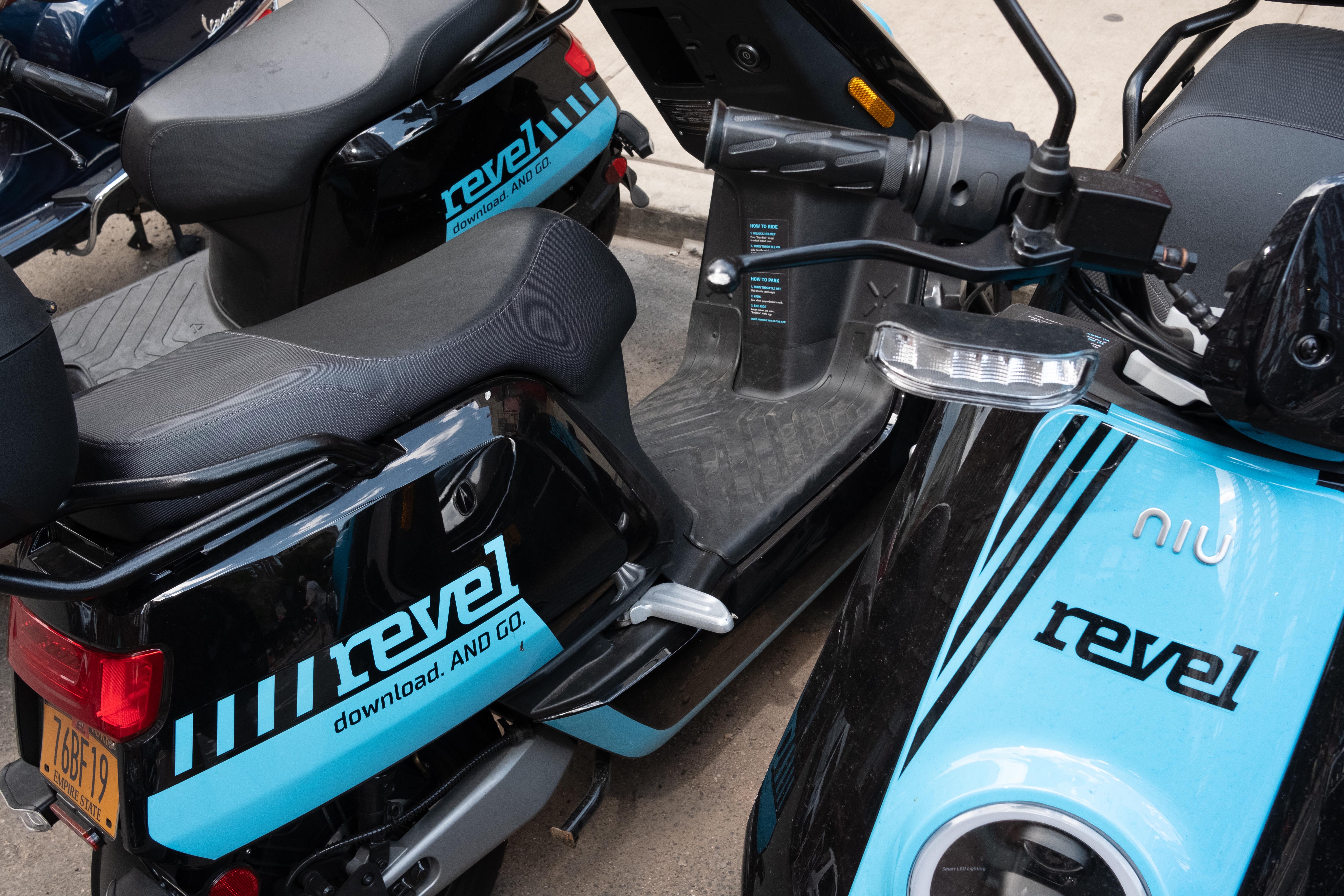
Revel is certainly a novel option, with its turquoise and black machines whizzing around some of the city’s rapidly gentrifying neighborhoods. But in a national urban landscape with varied micro-transportation services on one hand and a deeply troubled public transit grid on the other, experts suggested e-scooter brands like Revel would fail to address systemic needs while adding yet another class of vehicle to already-congested—and deadly—roads.
“As a lifelong bike and Vespa rider, I can tell you that there is some training and skill needed to operate a larger scooter,” said Gabe Klein, the former commissioner of both the D.C. and Chicago departments of transportation. “Also, vandalism and theft can be a serious issue as scooters in cities are often rounded up and shipped by boat to other countries.”
Suhey and Zeig, it should be noted, insist their product is more utilitarian than techno-utopian. Which is to say they don’t think they’re saving the country from decades of underinvestment in infrastructure. “We are all about just trying to make city living easier—a little easier, a little bit more fun, and just trying to fill any sort of transit gap where we can,” Suhey said.
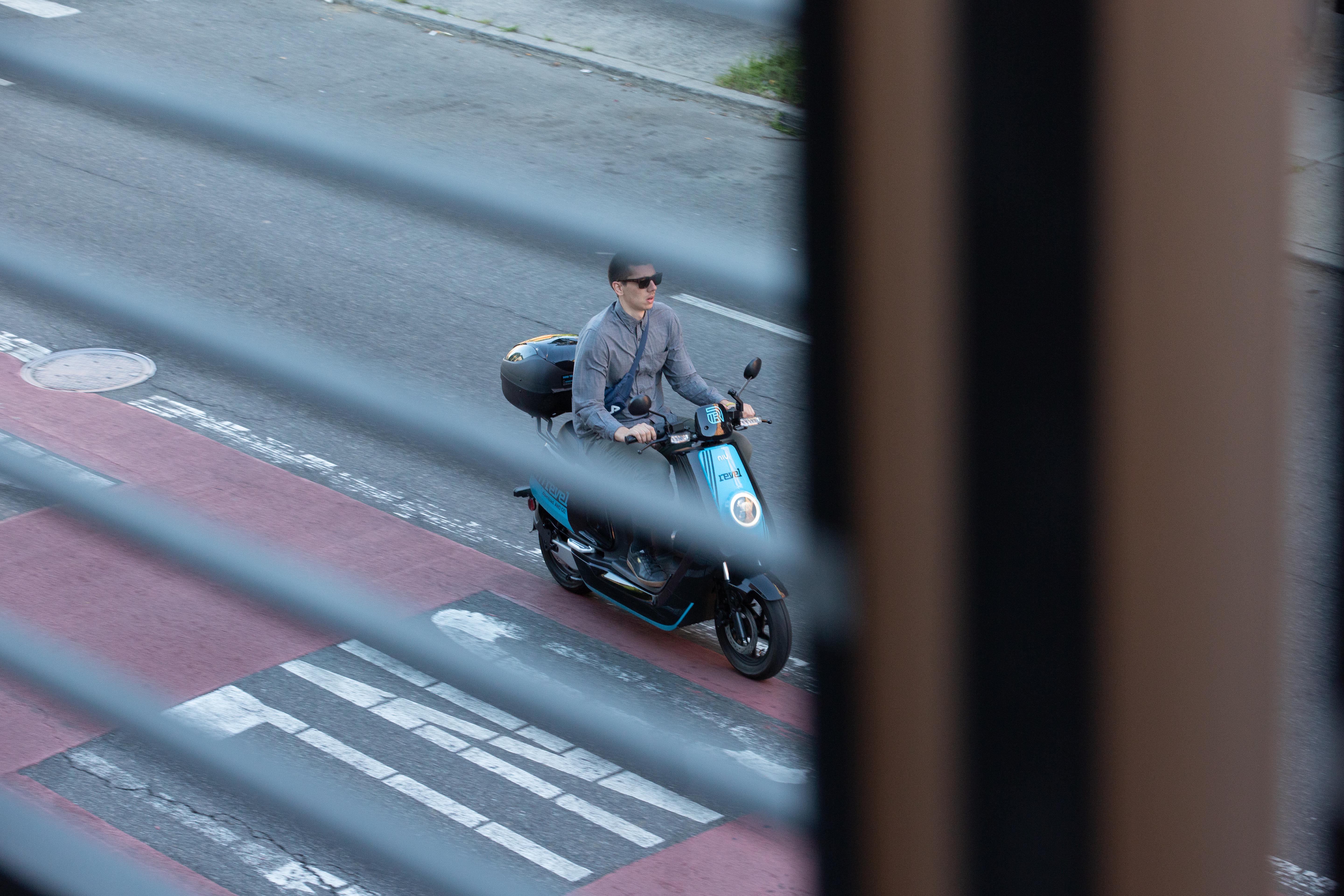
But cities have been known to go back and forth over what scooter and similar transit options ought to look like, and whether they can be properly regulated. Without the right approach, Revel could end up like other startups that have had their vehicles pulled from the streets across the U.S. In Atlanta and San Francisco, scooter expansion plans have been upended due to concerns ranging from discarded vehicles festering on sidewalks to improper use of bike lanes to e-scooter-related accidents and even deaths.
Revel was hoping it had demand and timing on its side. The pilot program in New York came when Brooklyn faced the shutdown of its L train—part of a larger years-long fit of subway dysfunction—and residents in Bushwick didn’t have access to the city’s bike rental program, Citi Bike. “The city needs this as an integrated part of the transit network,” Suhey argued. (The L train shutdown has since been mostly canceled.)
“There is definitely demand for shared micro-mobility,” said Joseph Chow, assistant professor and deputy director of the C2SMART University Transportation Center at NYU. “Whether or not this shared electric motor scooter will last depends on the operational strategies used by the company. As we have seen with staffing for carshare operations, the problem is quite complex to solve efficiently.”
Staffing has been a key question looming over ride-share services like Uber and Lyft as well as e-scooter companies like Lime, which have been accused of preying on gig economy “juicers” to charge their fleets. Early on, at least, Revel was poised to avoid that issue by employing full-time mechanics and engineers, not gig workers, for everything from helmet cleaning to battery swapping. That policy makes it less of a red flag from a labor perspective, but could stress its operating budget. The company has raised $5 million in equity capital to date and $5 million in equipment financing, according to a spokesperson.
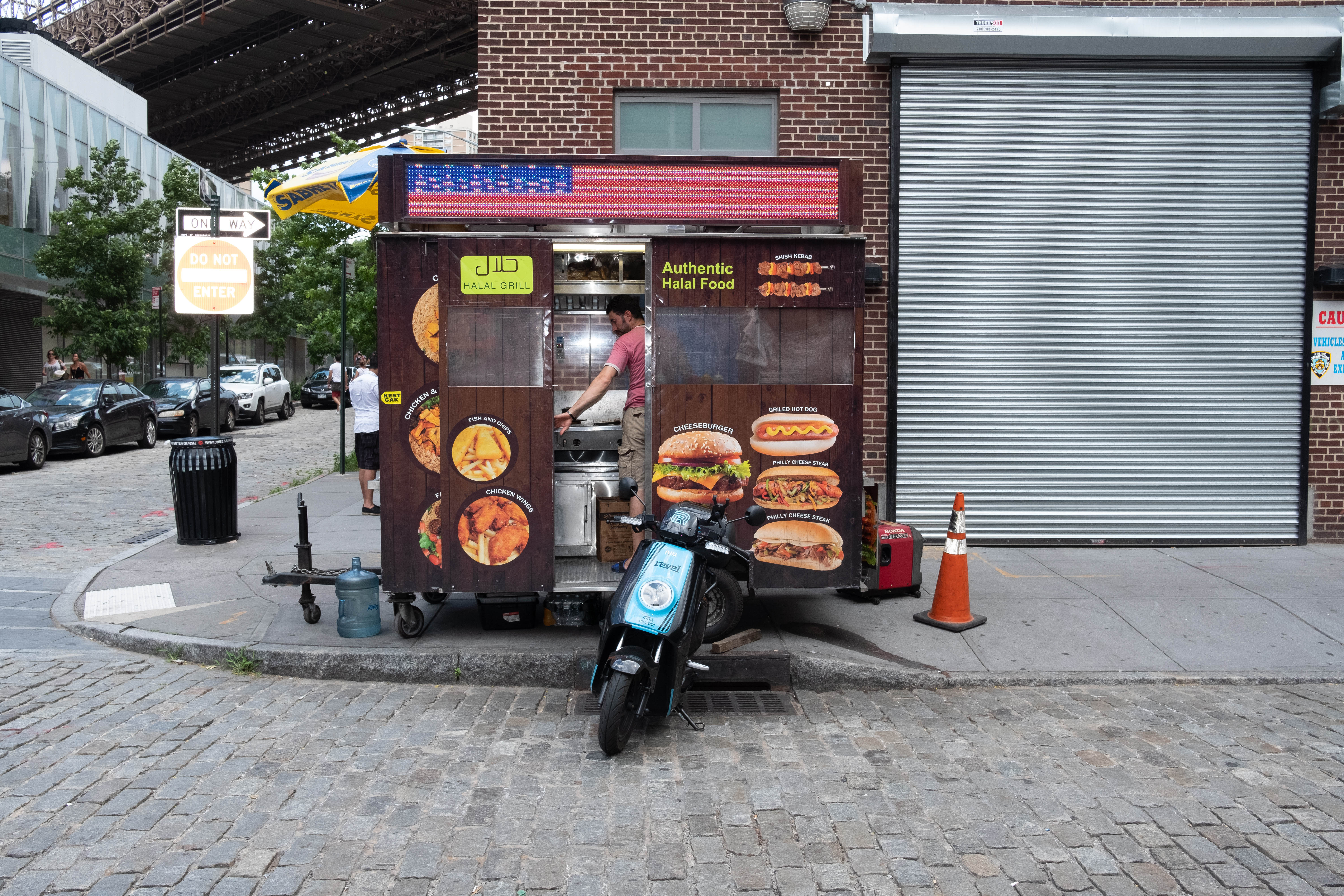
The early returns have been promising: Each of the company’s 1,000 e-mopeds averaged six riders per day—for a total number of 6,000 trips—in late June, by their own count. But that’s a paltry number compared to the nearly 800,000 trips taken using ride-hailing apps like Uber and Lyft in New York daily, according to data gathered in January by the Taxi & Limousine Commission (TLC). In that context, skeptics warned, adding smaller options to NYC’s streets may serve chiefly to put inexperienced riders on unfamiliar vehicles, surrounded by bigger cars and trucks—a dangerous setup. Brooklyn’s streets have already seen an uptick in fatal microtransit-related accidents, with as many as 15 cyclists killed city-wide this year, and motorcycle fatalities are even more common than bicycle deaths.
“People who might be driving these things for the first time after only driving cars might have a hard time adjusting,” said Phil Ritz, an environmental scientist for the EPA and resident of Dumbo in Brooklyn who used to ride a vespa and now has a Citi Bike membership. Ritz worried that with tourists and users without motorcycle licenses taking Revel—the company does require you to have a regular license, and it vets your driving history—there could be a burst of accidents in the coming weeks.
“I hope Revel users have signed their organ donor cards,” Ritz joked.

A spokesperson emphasized that rider safety was Revel’s number-one priority and that their customer service responds to any rider queries, concerns, or incidents in real time. “So far, of the hundreds of thousands of rides, 99.9 percent have been without incident,” they said in an email.
It should be noted that the company was clearly intent on avoiding some of the mistakes of its scooter predecessors. The e-mopeds are equipped with helmets and turn signals that beep when activated. The app gives new users tips on “how to Revel” and provides a mandatory tutorial video before riders can proceed. The company also offers free, albeit optional, lessons. Brandon Gilbert, a Revel lessons specialist, said the biggest mistake new riders made was their form on the vehicle—specifically something he called the “motocross knee.”
“Some people tend to… stick their body outside of the moped, which makes your balance a lot harder,” Gilbert explained.
The only problem with the training regimen: Most Revel users don’t actually take them. Suhey said the company was offering just three to five individual lessons per day on weekdays—and five to 10 on weekends—despite the existence of hundreds of users.
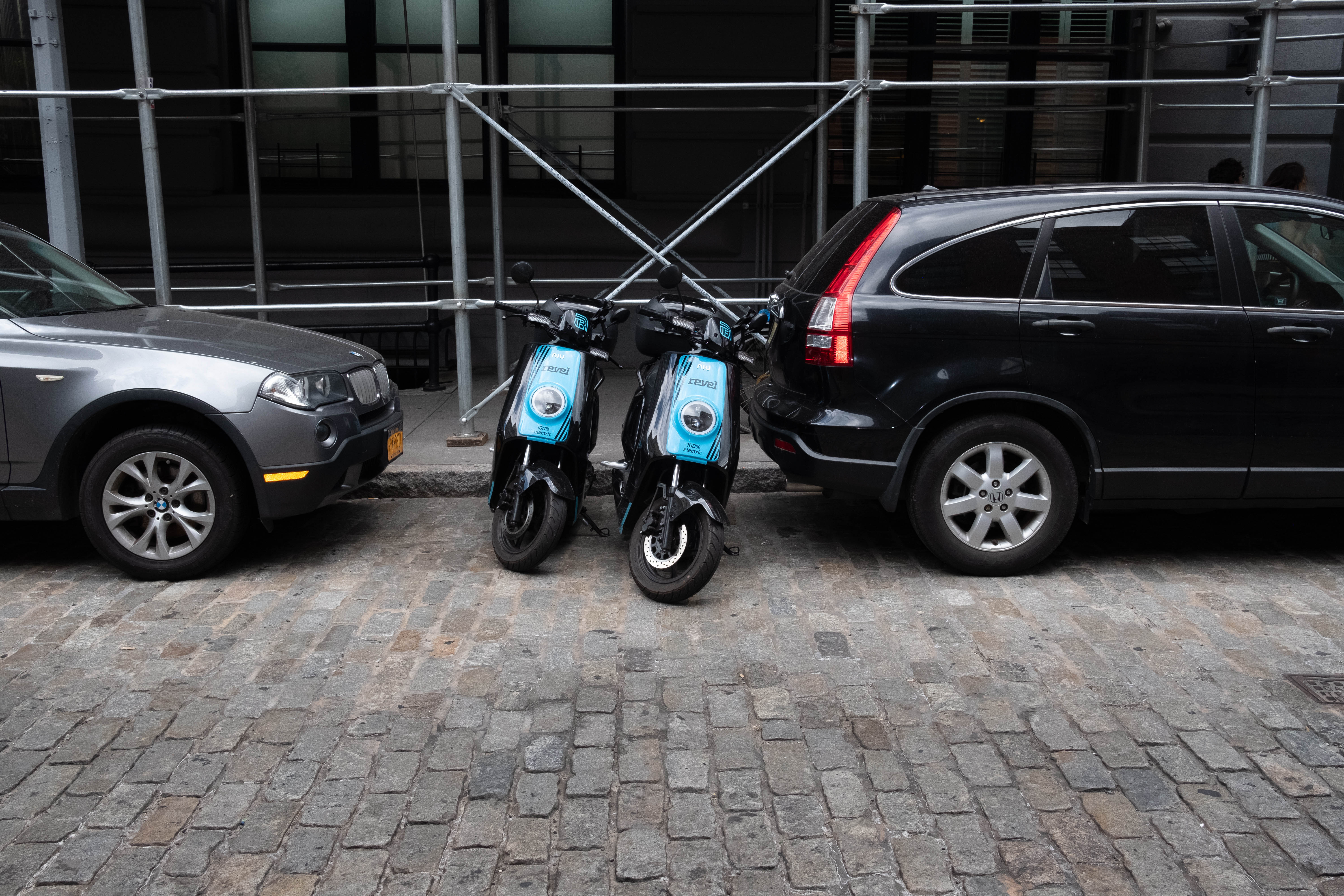
Still, some New Yorkers clearly found the thrill of the ride—and ease of grabbing a moped with a few touches of a phone—too much to pass up. Travis Fortounas, 23, downloaded the Revel app during the pilot period in October last year, and rides the e-mopeds four to five times a month when visiting his brother in East Williamsburg. He wasn’t aware of the free lessons when first using the service, but was still comfortable controlling the vehicle. “If I maintain a safe speed,” he hedged. “I have never gone over the speed limit [20 mph]—I’m too afraid to.” The devices are programmed not to exceed 29 MPH.
Fortounas said the e-mopeds were fun and offered a legitimate transportation solution for younger residents. But when asked how a service like this one might address the larger public transit limitations looming over a city like his, Fortounas wasn’t sure one had anything to do with each other.
“I don’t think these will solve any problems with the subway or make the city less polluted,” he said.
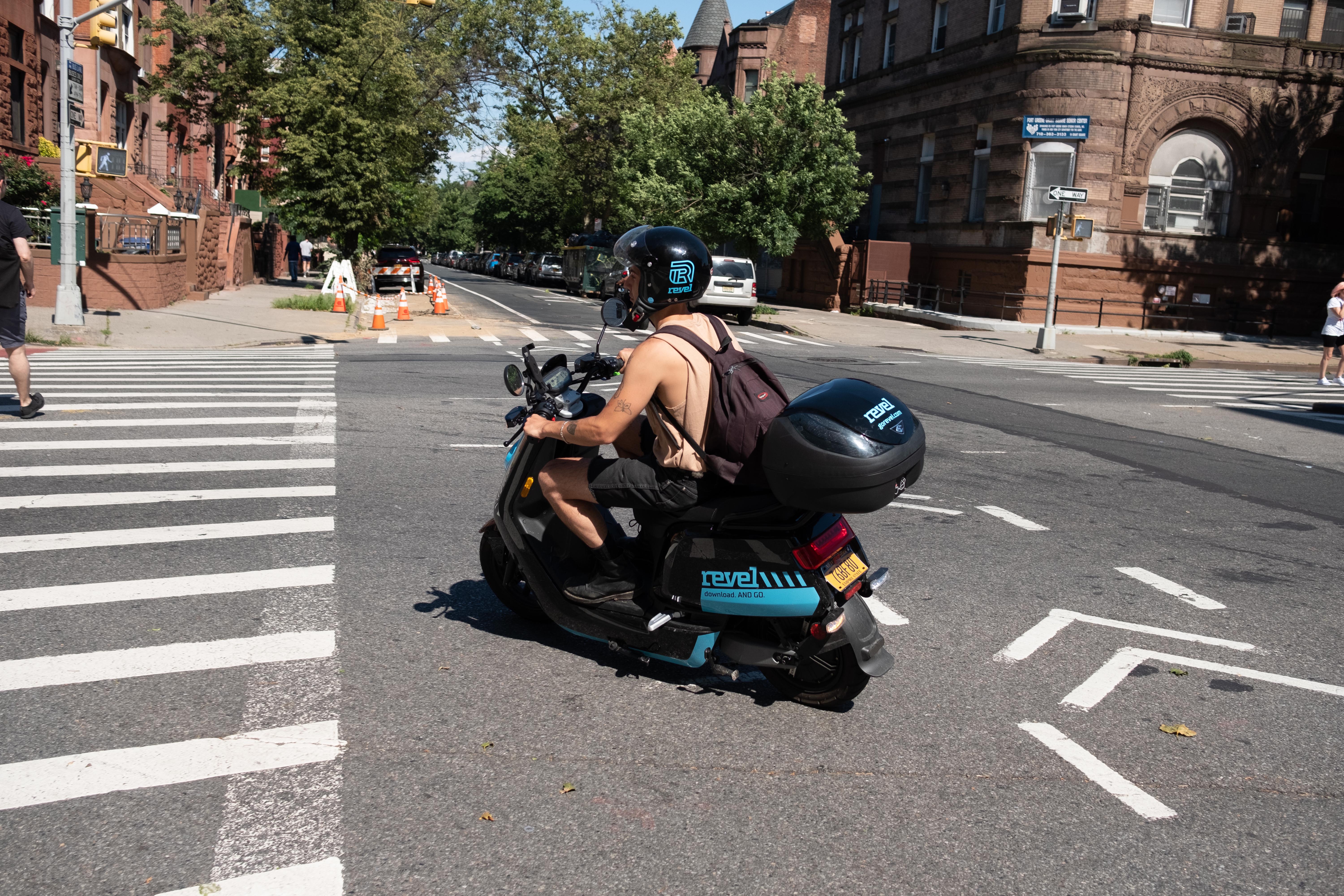
All Photographs by Jackson Krule. You can follow his work here.
This article originally appeared on VICE US.